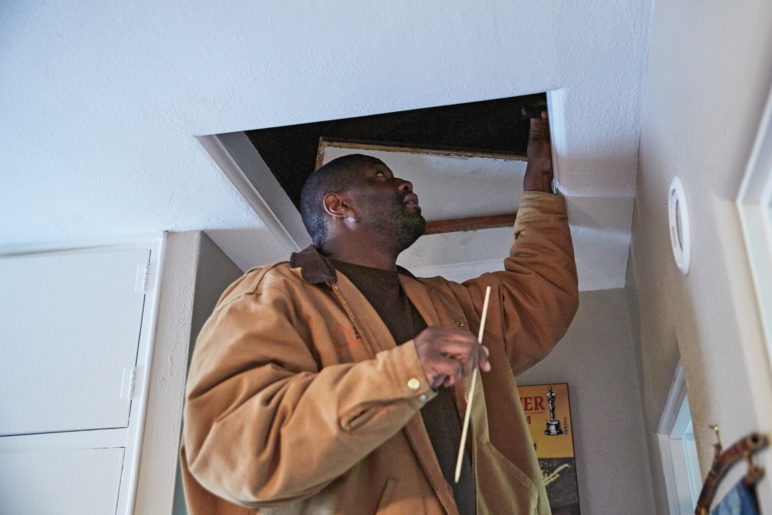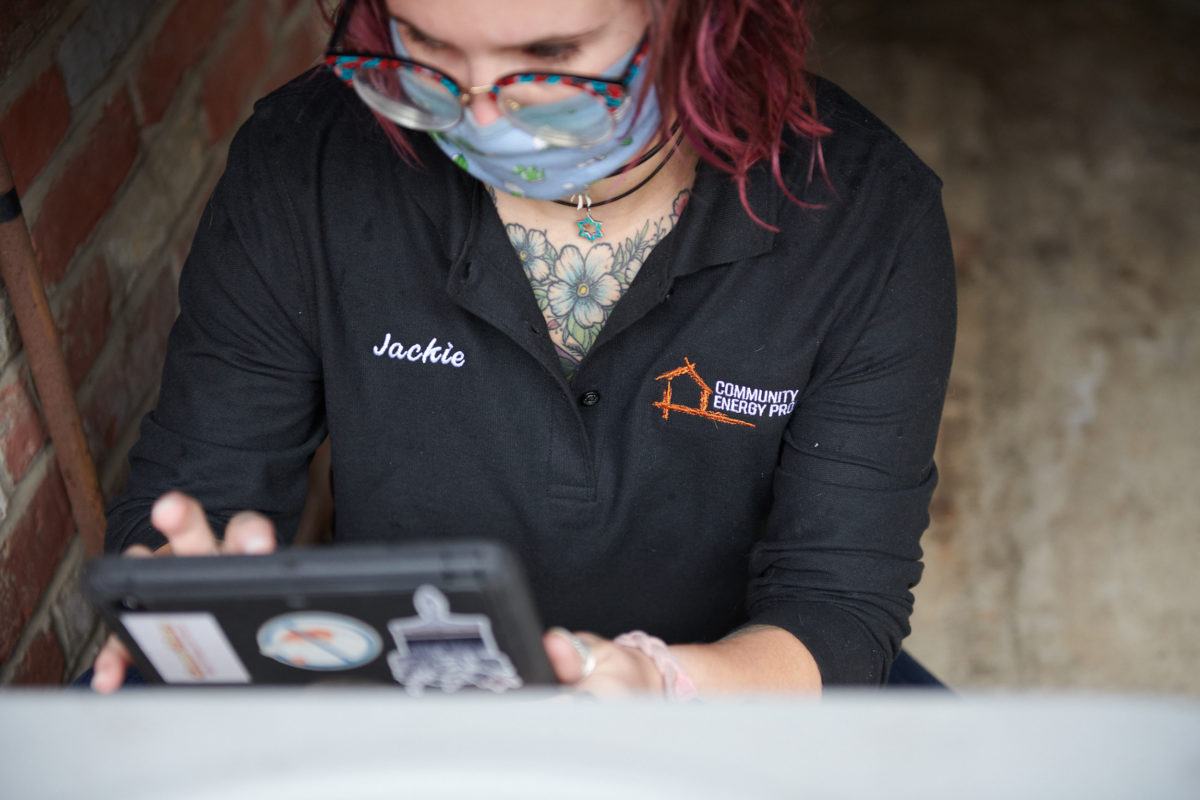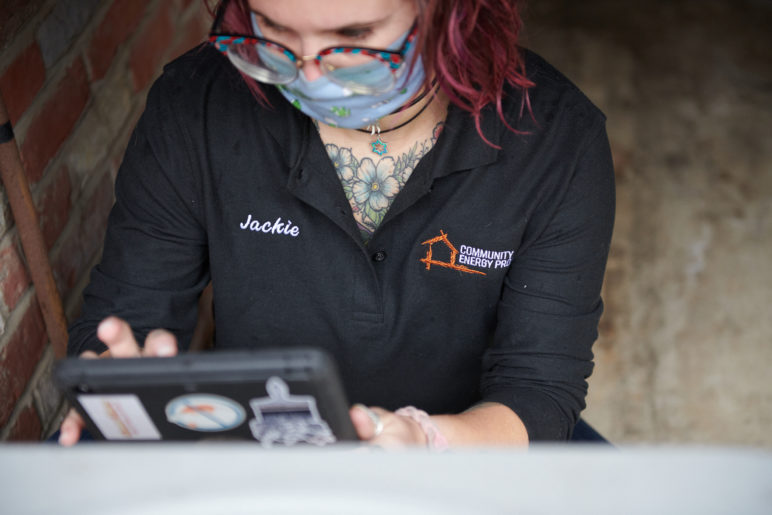If your home is in bad shape, your health is likely to be, too. That’s the basis behind the Healthy Homes Act, HB 2842, which funds home repair and safety issues that energy efficiency programs don’t typically address.
Healthy Homes was the third leg of the Oregon Clean Energy Opportunity Campaign, rounding out legislative wins by environmental justice advocates to make electricity more affordable and emission-free by 2040. The bill created an Interagency Task Force and a $10 million dollar Healthy Homes Repair Fund. To qualify, projects need to fit one of three categories: maximizing energy efficiency, extending the usable life of residences, or improving the health and safety of the occupants.
The latter two categories fall outside typical energy efficiency work but are critical to improving housing conditions for people most exposed to the impacts of climate change. Specific health and safety measures can include removal of asthma triggers; abatement for radon, lead, and mold; fire resistance; smoke filtration; and accessibility improvements.
Representative Pam Marsh has been fighting for this type of program— one that combines energy and health—for years. A similar proposal in 2019 failed to advance for a floor vote. “The original impetus for putting together Healthy Homes years ago,” Rep. Marsh explained, “was realizing that we did have money for energy efficiency, but the money could be used only minimally for associated problems that are typically present when there’s energy efficiency issues.” A more flexible fund for critical home repairs could address health disparities and ultimately unlock more energy efficiency work. This session Rep. Marsh joined with climate and environmental justice organizations, describing the collaboration as a great marriage. “The singular focus which the environmental justice advocates brought to it, that was the secret sauce,” Rep. Marsh said. “I think it was the renewed understanding that this is really an issue for low income and diverse communities that gave us much more attention this year.”
Since 2019, the connection between public health and housing has become front page news. The overlapping crises of the COVID-19 pandemic, widespread wildfire smoke, and record-breaking heat waves forced people to spend more time at home than ever before. The legislative session wrapped up at the same time the heat dome gripped the Northwest, killing at least 95 people in Oregon, with people living on lower incomes and people of color being disproportionately impacted.
As a result, the bill found broad bipartisan support, passing 56-2 in House and 23-4 in Senate, which many credited to the widespread need that reached across district lines. “Everyone deserves a home that is healthy and safe, but too many Oregonians live in housing that is aging and energy inefficient, has structural problems, and contributes to health disparities,” said Rep. Mark Owens, Republican from Crane, in a press release.
Weatherization programs save energy, but they could probably be better at just helping people
Low-income weatherization assistance programs as we know them today were also born out of a crisis. In the grips of the 1973 oil embargo, Maine was the first state to create a weatherization program to alleviate economic hardship from rising oil prices. The experimental program went national in 1976 turning into the Department of Energy Weatherization Assistance Program (DOE WAP). The Low Income Home Energy Assistance Program, which gave energy bill assistance to cold weather states, followed soon after in 1980.
Oregon’s Weatherization Assistance Program combines these two federal funds with money from the Bonneville Power Administration and from a small surcharge on local electric bills from investor-owned utilities. The program is overseen by the Department of Oregon Housing and Community Services (OHCS) and carried out by seventeen federally recognized Community Action Agencies across the state, which run a number of assistance programs to boost people out of poverty. Historically focused on cold weather, the most common efficiency improvements remain insulation, sealing air leaks, and furnace upgrades.

Image by Community Energy Project
By many measures, the system works. Over the last 5 years over 10,000 homes in Oregon have been upgraded. “We are the largest residential energy efficiency program in the state that nobody knows,” said Dan Elliot, the lead senior policy advisor for OHCS. In 2018 alone, the weatherization program invested $21 million into Oregon’s housing stock, saving the average assisted household $507 per year in energy bills. The savings extend from assisted households to all rate-payers by reducing demand on the grid as Oregon’s population has grown. “Our utility rates would be far, far higher if we didn’t have these types of programs in place,” said Elliot.
But some say cost-effectiveness is the wrong way to think about these programs. Federal requirements to ensure all energy efficiency upgrades pencil out to a net savings leaves many repair issues unaddressed. “There are a lot of environmental health issues inside a house,” said Community Energy Project Executive Director Charity Fain. People with limited financial resources struggle to repair hazards like rotting steps or mold. For that reason, she believes cost-effectiveness requirements for low-income households should be scrapped altogether. “They will never be cost effective–they can’t be because of the deferred maintenance,” she explained. Community Energy Project is one of the non-profits that does energy efficiency work outside of federal weatherization programs. “For the houses that we’re doing, they might need a new electric panel and a new roof, and they might have siding falling off the side of their house. There’s all these kinds of repair needs that are never covered in energy efficiency.”
Health and safety repairs are currently exempt from cost-effectiveness calculations, but they are capped at 15 percent to 30 percent of total project costs, depending on the funding source. For each grant, roof repairs are capped at 100 square feet; plumbing repair maxes out at $500; and electrical work is capped at $1,250, falling short of a $2,000 electrical panel upgrade that might be needed to install a heat pump or become electric vehicle ready. Those dollars don’t stretch as far as they used to, given the price increases in both materials and labor since the pandemic started. Project managers commonly “braid” multiple funding sources together on the same project, but that creates its own headaches. The result is that over a five year period from 2016 to 2020 the Oregon Weatherization Assistance Program spent $101 million, but just $12 million on health and safety improvements.
Joe Vollmar, the Housing Director for Access, the Community Action Agency for Jackson County in Rep. Marsh’s district, estimated that half or more of the weatherization jobs they do would benefit from Healthy Homes funding. “We do some ventilation for homes to try to improve the air quality inside the home. What we don’t address is a lot of the root causes of those air quality issues.” Pest infestations, replacing carpeting with hard flooring, remediating mold, radon, and lead paint are all items their funding can’t currently address.
Next up: A case for more investment?
Grants from the Healthy Homes Repair Fund will be distributed by the Oregon Health Authority, though there are still lots of details to hammer out. A task force appointed by the governor will be working through the final rulemaking for the program. The task force will decide how to coordinate funding across agencies to maximize access to these services. Once this is up and running, community action agencies, housing authorities, local governments, tribal nations, nonprofit organizations, and coordinated care organizations that serve Medicaid customers will be able to apply for grants.
The task force will also develop tools to collect information to oversee the program and try to continue improving it. Program coordinators hope that the fund will lessen the administrative headaches of implementing weatherization projects and ultimately offer better health outcomes for households that participate.
Is $10 million enough? “It’s a drop in the bucket,” says Fain. But legislators, bureaucrats, and advocates are all optimistic that this is just the beginning. Elliott likened Healthy Homes to the pilot weatherization programs of the 1970s. He anticipates the data generated from the program will demonstrate the scale of the need and benefits of the investment, positioning them to go back to the legislature with a stronger case for an expanded program.
Rep. Marsh seemed to agree. “Since the program has passed and we’re having the kind of summer that we are, we are continually recognizing the kinds of services that we need to fund out of that $10 million,” she said. “We had quite frankly been thinking of it as a one-time infusion, but I think we have the attention of leadership to the extent that this could be an ongoing and permanent part of the budget.” The first report is due back to the legislature by September 15, 2022.










stephen w carroll
I ‘m a Veteran, married, living in a 1976 single wide trailor. I live at Elk Meadow Homeowners Cooperative in Warrenton Oregon. My roof is leaking, water runs out a hole in our living room. The hole is where our ceiling fan used to be. I’m 71 years old diabetic, have a balance problem. When there’s a break in the weather, I go up on the roof trying to find where the roof is leaking. We tried to get a loan for a new roof, but they said no. I saw your site, but where do I apply for help?
Tim Lynch
Hi Stephen,
I am so sorry to hear about the adversity you are facing, you sound like a strong and resilient individual. I don’t work with Community Energy Project, but I have a couple of ideas where you may be able to get some help:
Community Action Team
Clatsop Community Action
I wish I could do more to help you myself, I hope you get the help you need and deserve.
Tim